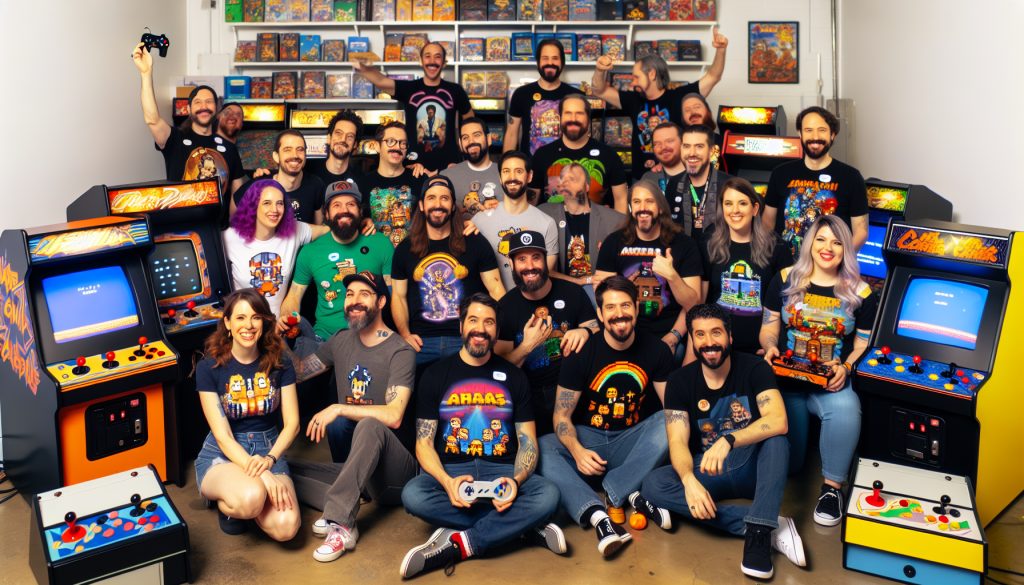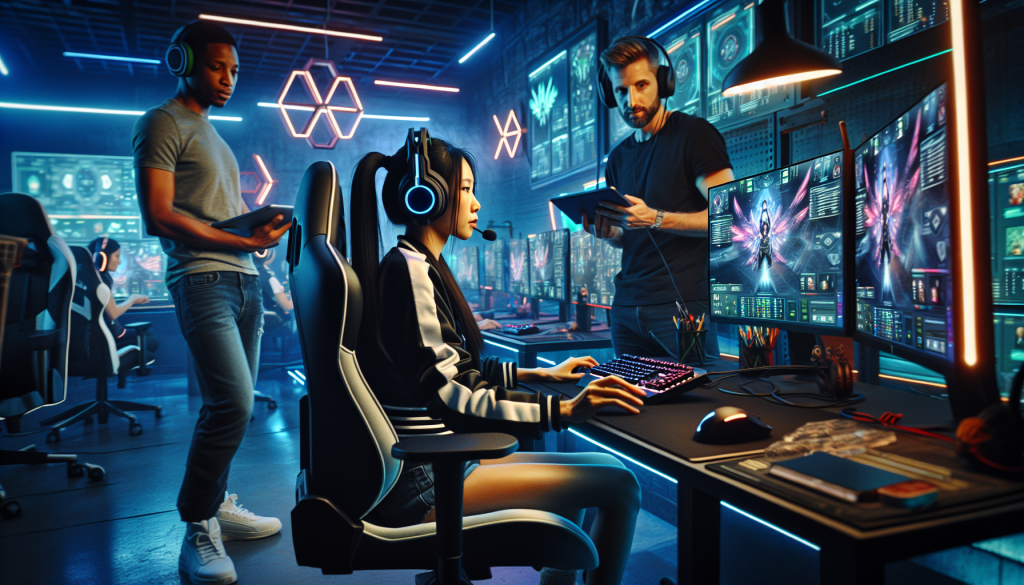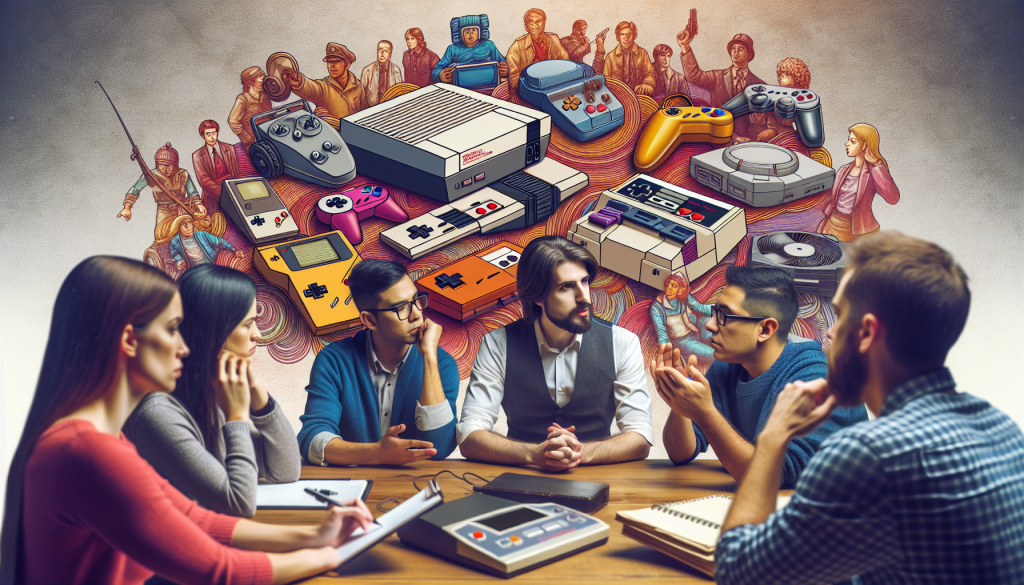Advancements in Assistive Technology for Disabled Gamers
The world of gaming has evolved tremendously over the years, and with these changes has come a host of advancements in assistive technology. As a result, disabled gamers now have an array of options to choose from that make the gaming experience more accessible and enjoyable. Let’s delve into some of these advancements and how they have transformed the gaming landscape for disabled individuals. Adaptive Controllers One of the most noteworthy advancements in assistive technology for disabled gamers is adaptive controllers. These devices are designed to provide flexibility and ease of use for gamers with mobility limitations. An excellent example of this is the Xbox Adaptive Controller. This controller features large programmable buttons and a variety of ports that can be connected to external devices like switches, buttons, or joysticks, catering for a wide range of physical disabilities. Eye-Tracking Technology For gamers with limited mobility, eye-tracking technology has been nothing short of revolutionary. This technology allows gamers to control gameplay with their eye movements. Companies such as Tobii Gaming have led the way in this field, creating devices that offer precise control for gamers who may not be able to use conventional controllers. Software Accessibility Features Alongside these hardware adaptations, there have also been significant advancements in software. Platforms like Steam and PlayStation have incorporated accessibility settings that allow for customizing the gaming experience. These features include options for color contrast, subtitles, and even gameplay speed, making games more accessible for people with visual or cognitive impairments. Voice Control and Recognition Voice control and recognition technology are making it easier than ever for disabled gamers to engage with their favorite video games. Systems like Amazon’s Alexa and Apple’s Siri can now be integrated into gaming platforms, allowing gamers to use voice commands to control gameplay. Haptic Feedback Devices Another exciting development for disabled gamers is the emergence of haptic feedback devices, which can enhance gameplay for deaf or hard-of-hearing gamers. These devices translate audio signals into tactile feedback, allowing gamers to feel the game’s vibrations and movements. It’s clear that assistive technology for disabled gamers has come a long way, and it’s only getting better. These advancements have not only made gaming more accessible but also more immersive and enjoyable for all.Role of Gaming Companies in Promoting Accessibility
In this exciting era of technological advancements, gaming companies have a crucial role to play in fostering inclusivity. From developing games that are accessible to all users, to ensuring that the gaming community is a welcoming space for everyone, these companies can create a significant impact.
Let’s delve into the various ways gaming companies are actively promoting accessibility.
Pioneering Accessible Gaming Solutions
Many forward-thinking gaming companies are introducing innovative features designed to improve the gaming experience for disabled players. This includes customizable controls, text-to-speech features, and even specially designed hardware. For instance, Microsoft’s Xbox Adaptive Controller is a powerful testament to this commitment. This groundbreaking device may be customized according to the individual needs of the gamer, making gaming more accessible than ever before.
Collaborating with Disabled Gamers
A truly accessible gaming experience can only be achieved through close collaboration with disabled gamers. Recognizing this, many gaming companies are inviting disabled gamers to be part of the design and testing process. This collaboration not only ensures that the final product is truly accessible but also empowers disabled gamers by including them in the creative process.
Creating Inclusive Gaming Communities
In addition to developing accessible games, gaming companies are also working to create inclusive communities where everyone feels welcome. This includes implementing strict policies against discrimination and harassment, promoting positive interactions, and actively featuring disabled gamers in their marketing campaigns.
Providing Educational Resources
Lastly, gaming companies are providing educational resources to help both developers and gamers understand the importance of accessibility. This includes workshops, online tutorials, and detailed guides that cover everything from basic accessibility features to advanced customization options.
Indeed, promoting accessibility in gaming is a multifaceted task that requires continuous effort and commitment from gaming companies. By embracing this role, they can ensure that everyone, regardless of their abilities, can enjoy the immersive world of gaming.
Impact of Legislation on Gaming Accessibility
The world of gaming is rapidly changing, and so too is the legislation that governs it. With the growing recognition of the importance of accessibility in gaming, laws are being enacted to ensure that all gamers can enjoy the fun. So, what exactly does this mean for disabled gamers?
The Americans with Disabilities Act (ADA)
The ADA, passed in 1990, is a landmark piece of legislation that prohibits discrimination against individuals with disabilities in all areas of public life. In recent years, its provisions have been interpreted to apply to websites and digital content as well – including video games.
- As a result of the ADA, game developers in the United States are now obligated to make their products accessible to all users.
- Failure to comply can result in legal action, as was the case with the gaming giant, Sony, who faced a lawsuit in 2012 for not making their games accessible.
The 21st Century Communications and Video Accessibility Act (CVAA)
Enacted in 2010, the CVAA is another important piece of legislation that impacts gaming. This law requires advanced communication services, including online games, to be accessible to individuals with disabilities.
- The law applies to both game hardware and software, meaning that both the console and the game itself need to be accessible.
- Since the CVAA came into effect, we have seen significant improvements in game accessibility, such as speech-to-text and text-to-speech features, adjustable color schemes for the visually impaired, and remappable controls for those with physical disabilities.
International Legislation
Legislation outside of the United States is also evolving to promote accessibility in gaming. In the EU, for example, the European Accessibility Act, which was adopted in 2019, mandates that products and services, including digital content such as video games, be accessible to individuals with disabilities.
These laws are a major step forward in the fight for equal rights for disabled gamers. They not only protect the rights of disabled individuals to fully participate in gaming, but they also encourage game developers to innovate and push the boundaries of what is possible in accessible gaming. The impact of these rules is clear – a more inclusive, enjoyable gaming world for everyone.
Case Studies: Successful Implementations of Accessible Gaming Solutions
When it comes to accessible gaming, some innovative companies are blazing trails, creating a more inclusive environment for all gamers. Let’s take a closer look at some successful implementations of accessible gaming solutions that are changing the game.
Microsoft: Xbox Adaptive Controller
Microsoft’s Xbox Adaptive Controller is a stellar example of designing for accessibility. This revolutionary device allows people with limited mobility to construct a custom gaming setup that caters to their individual needs. Its intuitive design, complete with large programmable buttons and 19 3.5mm ports for external devices, provides a flexible platform for gamers to connect switches, buttons, mounts, and joysticks, effectively creating a personalized controller.
Sony: The Last of Us Part II
For visually impaired gamers, the struggle to enjoy gaming can be real. Sony, however, made a landmark move with its release of The Last of Us Part II. The game is packed with over 60 accessibility settings, including high contrast mode, text-to-speech, and adjustable combat difficulty. It’s a sincere effort to create a gaming experience that everyone can enjoy, regardless of their visual abilities.
Ubisoft: Assassin’s Creed Valhalla
Ubisoft’s Assassin’s Creed Valhalla deserves a special mention for its thoughtful accessibility features. The game allows players to adjust color contrast for better visibility and even includes a subtitle background option to make reading easier against contrasting backgrounds. But perhaps the most commendable feature is the game’s menu narration, which aids gamers with visual impairments.
Electronic Arts: Madden NFL 20
Electronic Arts (EA) has also made substantial strides in accessible gaming. Particularly with Madden NFL 20, which includes settings like colorblind support, options for adjusting controller vibration, closed captioning, and visual assistance for passing plays. These features help to ensure that everyone can enjoy the thrill of the game, regardless of their physical abilities.
These are just a few examples of how the gaming industry is making strides in creating accessible experiences. It’s clear that the future of gaming lies in accessibility, ensuring that everyone, regardless of their abilities, can participate and enjoy the world of gaming.












